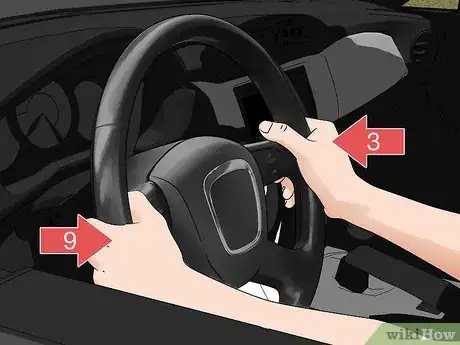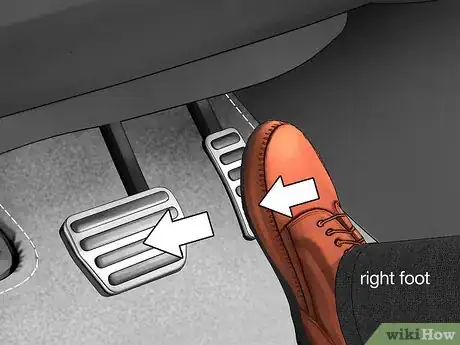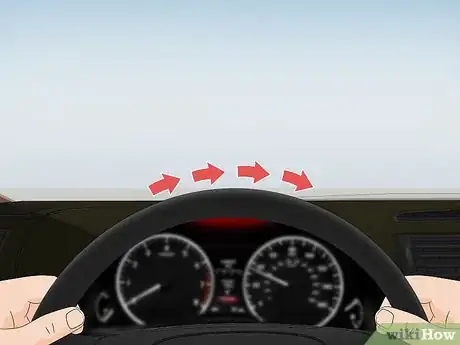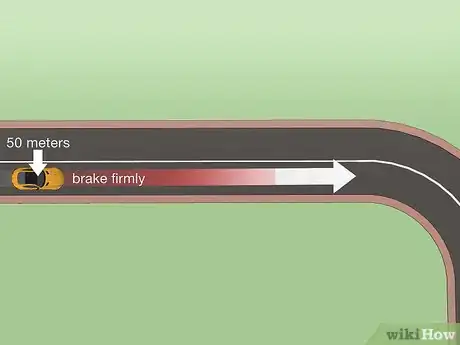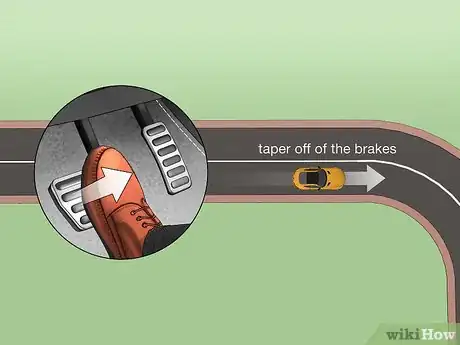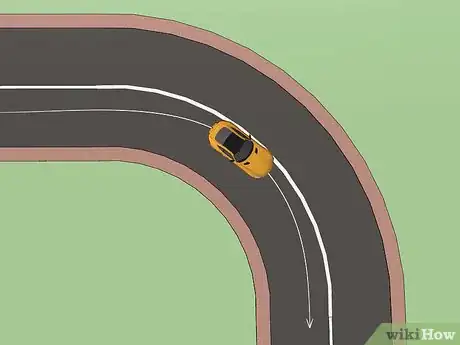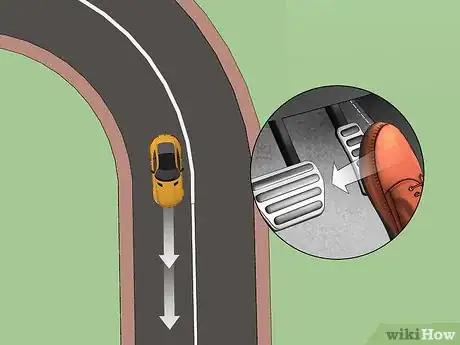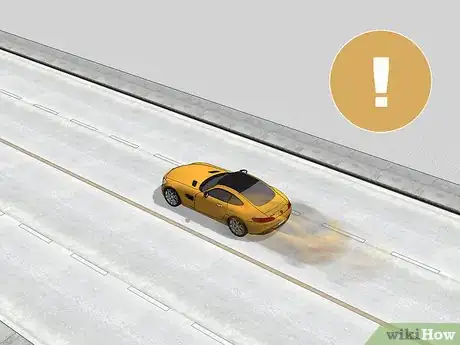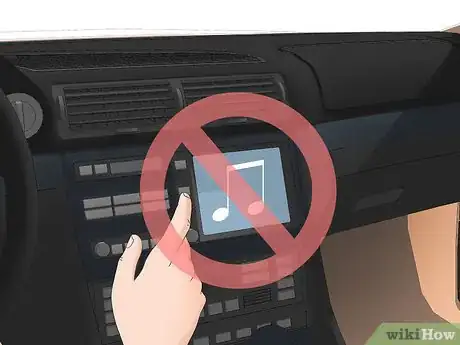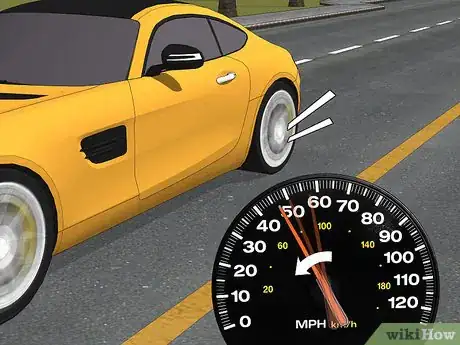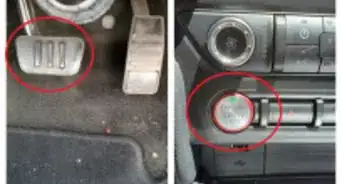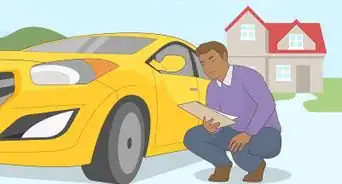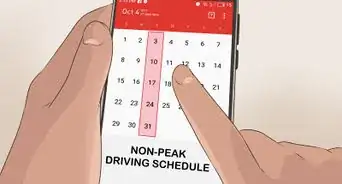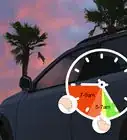This article was co-authored by Simon Miyerov. Simon Miyerov is the President and Driving Instructor for Drive Rite Academy, a driving academy based out of New York City. Simon has over 8 years of driving instruction experience. His mission is to ensure the safety of everyday drivers and continue to make New York a safer and efficient driving environment.
There are 7 references cited in this article, which can be found at the bottom of the page.
This article has been viewed 24,862 times.
If you’re interested in driving racecars or building your own souped-up car, you’re probably interested in knowing how to drive fast. Even if you’re driving a generic non-racing car, you may be tempted from time to time to drive fast along a deserted stretch of highway. However, driving fast can be both dangerous and difficult to pull off without crashing or going off the road. There are several steps you can follow to make sure you’re safe when driving at extreme speeds.
Steps
Handling Your Car
-
1Wear a seatbelt anytime you’re driving, whether or not you’re going fast. It goes without saying that your first step in any driving scenario should be to put on a seatbelt. If you get in an accident—whether you flip the car or get in a minor fender-bender—your seatbelt should help to keep you safe and may prevent serious injury or death.[1]
- If the vehicle you’re driving requires you to manually engage the airbags, do this as well, especially if you have a passenger.
-
2Position your hands at 9 o’clock and 3 o’clock on the steering wheel. Imagine that your steering wheel is the circular face of an analog clock. When you drive, place your left hand at the 9 o’clock position (on the left-middle of the wheel) and your right hand at the 3 o’clock position (the right-middle). This will maximize your control of the car. When you’re driving fast, it’s important to have as much control over the vehicle as possible.[2]
- Many drivers were taught to keep their hands at 10 o’clock and 2 o’clock. While this positioning is fine for regular driving, it’s not ideal if you’re racing or driving very fast. Placing your hands at 9 and 3 lets you turn the steering wheel with more force.
Advertisement -
3Use only your right foot to control both the gas and the brake pedal. Driving with both feet is dangerous (especially when you’re driving at high speeds). So, drive with only your right foot. In true racecars, there will be a panel on the left side of the floor to place your left foot on. Of course, if you’re driving a car with a manual transmission, use your left foot to press the clutch.[3]
- If you were to tense up with both feet on the pedals, you’d hit the accelerator as well as the brake.
-
4Use smooth, controlled movements to steer and control your car. For example, turn the steering wheel smoothly rather than jerking it back and forth. Making abrupt, swift turns can quickly transfer the vehicle’s weight from side to side and destabilize the car. When you’re traveling at fast speeds, it’s important to keep the vehicle as stable as possible to make sure you don’t lose control of the vehicle. Also press the gas and brake pedals smoothly.[4]
- If you’re driving a manual-transmission vehicle, shift smoothly rather than jamming or grinding the gears.
Taking Turns at High Speed
-
1Step firmly on the break before entering a turn if you’re driving fast. When you take a turn in a car, centrifugal force pulls your vehicle outward, in the opposite direction from the way that you’re turning. If you’re driving well over the speed limit, the centrifugal force could be strong enough to pull your car off of the roadway. If you’re driving on a race course (or trying to drive like a racecar driver), step sharply on the brakes about 50 metres (160 ft) before you enter a turn.[5]
- Only use this technique if you’re racing on a controlled course or drag strip. If you’re driving fast on a highway with other motorists around, press lightly on your brake pedal to slow down about 100 metres (330 ft) before your turn.
- Depending on the sharpness of the turn, plan to reduce your speed by about a quarter before taking a turn. For example, say you’re driving along a highway at 85 miles per hour (137 km/h). If you’re approaching a sharp turn, decrease your speed to about 60 miles per hour (97 km/h).
-
2Taper off of the brakes before you begin to turn. After stamping hard on the brakes 50 metres (160 ft) before a turn, gradually decrease the amount of pressure that you’re putting on the brake pedal. This will redistribute the car’s weight between all 4 tires before you start to turn. By the time that you start turning the wheel, you should only be applying about a quarter of the pressure on the brake pedal that you initially applied.[6]
- When you’re in the sharpest part of the turn, there will be a short window of time when your foot will not be pressing the brake or the accelerator.
-
3Aim your vehicle so that the turn you make is as flat as possible. This racing technique is easier said than done. To decrease centrifugal force when you take a turn while driving, position your vehicle as far as possible to the outside edge of the roadway opposite the direction you’re turning. When you turn, aim towards the road’s inside edge. As you’re existing the turn, aim for the road’s outside edge again.[7]
- For example, if you’re turning left at a high speed, position your car as far as you can on the right side of the track or roadway. Aim towards the left side of the roadway when you’re turning to keep the path of your car as straight as possible.
- “Flattening” out your turns will help you maintain speed without risking losing control of the car.
-
4Accelerate as you straighten your tires and pull out of the turn. Once you’ve passed the halfway point of a turn, start speeding back up. Smoothly transition your right foot from the brake pedal to the gas pedal. At the same time as you’re turning the steering wheel to straighten out your tires, press down lightly on the gas to resume your fast speed.[8]
- With the tires pointing straight ahead, you can get back up to full speed without worrying about centrifugal force pulling you off of the road.
Staying Safe While Driving
-
1Avoid driving over the speed limit on wet or icy roads. If it’s raining out, or if there’s a layer of ice on the road, keep your car’s speed at or below the speed limit. Even on mildly wet roads, the tires of your vehicle could begin to hydroplane and you could lose control of the car. If it’s recently rained or snowed and the temperature is below 32 °F (0 °C), there could also be black ice on the roadway.
- It’s best to only drive fast on dry roads. This will greatly decrease your likelihood of a crash and potential serious injury.
-
2Turn off music and other distractions when you’re driving fast. Whether you’re driving fast on a racetrack or out on the open road, your attention should be 100% focused on the road. If you’re distracted by the radio while you’re driving, you’re much more likely to get into an accident or careen off of the road. So, turn off the radio or your car stereo until you’ve slowed back down to the speed limit.[9]
- Also never text or look at your phone screen while driving fast. Looking away from the road for even a couple of seconds could result in a collision.
- Keeping the music off also allows you to hear if any other motorists honk their horns at you to indicate danger.
-
3Slow down if you hear your tires start to squeal. Regardless of the context in which you’re driving fast, it’s important to listen to your tires. If they start to squeak and squeal as you’re driving—especially if it happens while you’re taking a corner—it’s a sign that you’re driving too fast. Slow it down by 5–10 miles per hour (8.0–16.1 km/h) to make sure that you stay in control of the vehicle.[10]
- If you do not slow down when you hear your tires squealing, you could lose control of the vehicle.
Expert Q&A
-
QuestionIs it okay to drive fast?
 Simon MiyerovSimon Miyerov is the President and Driving Instructor for Drive Rite Academy, a driving academy based out of New York City. Simon has over 8 years of driving instruction experience. His mission is to ensure the safety of everyday drivers and continue to make New York a safer and efficient driving environment.
Simon MiyerovSimon Miyerov is the President and Driving Instructor for Drive Rite Academy, a driving academy based out of New York City. Simon has over 8 years of driving instruction experience. His mission is to ensure the safety of everyday drivers and continue to make New York a safer and efficient driving environment.
Driving Instructor So long as you're making safe decisions and you're not breaking the law or going over the speed limit, sure. Just make sure you stay alert and don't emphasize speed over safety.
So long as you're making safe decisions and you're not breaking the law or going over the speed limit, sure. Just make sure you stay alert and don't emphasize speed over safety. -
QuestionIs it okay to drive slower than the speed limit?
 Simon MiyerovSimon Miyerov is the President and Driving Instructor for Drive Rite Academy, a driving academy based out of New York City. Simon has over 8 years of driving instruction experience. His mission is to ensure the safety of everyday drivers and continue to make New York a safer and efficient driving environment.
Simon MiyerovSimon Miyerov is the President and Driving Instructor for Drive Rite Academy, a driving academy based out of New York City. Simon has over 8 years of driving instruction experience. His mission is to ensure the safety of everyday drivers and continue to make New York a safer and efficient driving environment.
Driving Instructor Yes, you should never drive faster than the speed limit. You also shouldn't drive faster than you're more comfortable with.
Yes, you should never drive faster than the speed limit. You also shouldn't drive faster than you're more comfortable with.
Warnings
- While it’s fine to take your car to a drag strip for legal racing, it’s illegal to street race or exceed the speed limit on a highway. If you do so, the police are likely to pull you over and give you a ticket.⧼thumbs_response⧽
References
- ↑ https://www.popularmechanics.com/cars/a11112/a-few-helpful-tips-on-driving-much-much-too-fast-17114080/
- ↑ https://www.timetravelturtle.com/drive-fast-safe-lamborghini/
- ↑ https://www.timetravelturtle.com/drive-fast-safe-lamborghini/
- ↑ https://www.allenbergracingschools.com/success-tips/drive-high-performance-car/
- ↑ https://www.popularmechanics.com/cars/a11112/a-few-helpful-tips-on-driving-much-much-too-fast-17114080/
- ↑ https://www.timetravelturtle.com/drive-fast-safe-lamborghini/
- ↑ https://www.popularmechanics.com/cars/a11112/a-few-helpful-tips-on-driving-much-much-too-fast-17114080/
- ↑ https://www.popularmechanics.com/cars/a11112/a-few-helpful-tips-on-driving-much-much-too-fast-17114080/
- ↑ https://youtu.be/i45EK4P3amQ?t=20
- ↑ https://youtu.be/i45EK4P3amQ?t=50
- ↑ https://youtu.be/i45EK4P3amQ?t=121
- ↑ Simon Miyerov. Driving Instructor. Expert Interview. 4 December 2019.

